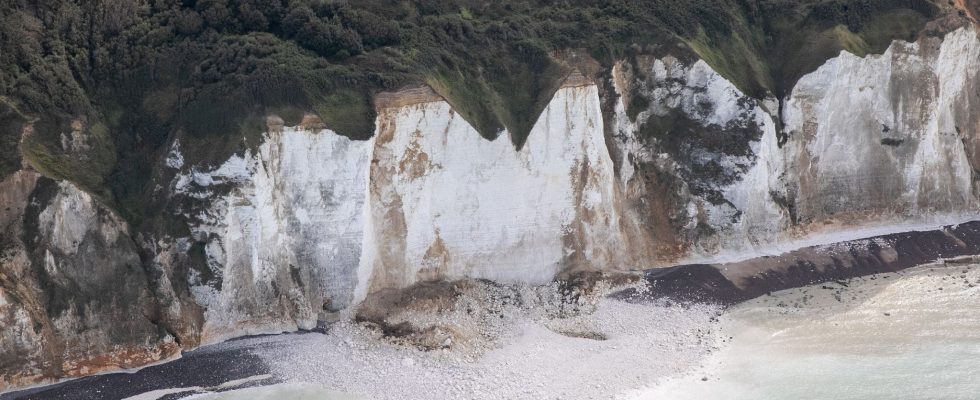“The equivalent of a football field disappears every week in our country as a result of the progression of the oceans, a phenomenon which is accelerating,” declared this Thursday, April 4, on TF1, Christophe Béchu, the Minister of the ecological transition. Some 500 municipalities at risk have already been identified and the ministry has “started working with mayors” to put in place “tailor-made plans”, he added, emphasizing that “the documents of town planning” were going to be “revised” on the basis of the maps.
“There will be areas that will be uninhabitable” on the coast, 20% of which is eaten away by coastal erosion, said the minister, whose services will publish maps of threatened territories this Friday.
Compensation or rehousing behind the town on other land are “solutions which are on the table today”, he underlined, advising the residents concerned to go see their mayor.
Three scenarios for 2028, 2050 and 2100
Between a thousand buildings in 2028 and several hundred thousand by 2100 will potentially be affected by coastal erosion in France, reveals a report from the Center for Studies and Expertise on Risks, Environment, Mobility and development (Cerema). France is particularly vulnerable to the retreat of the coastline, the boundary between land and sea, which shifts under the effect of natural phenomena (swell, wind), rising sea levels and human interventions.
Erosion is eating away around 900 km of coastline. To anticipate its consequences, Cerema has drawn up three scenarios for 2028, 2050 and 2100, based in particular on aerial photos and satellite data. In 2028, 1,046 buildings at risk, more than half of which are residential, could be eaten up by the sea, representing a market value of “around 240 million euros”. On this date, “the position of the coastline will often depend more on the effect of storms […] than the trend of chronic decline”, specify the authors.
By 2050, according to a second scenario considered “realistic” which provides for the maintenance of protective structures (dykes, etc.), 5,208 housing units would be affected, including nearly 2,000 second homes, for around 1 .1 billion euros. In 2100, a scenario which is based on “unfavorable” hypotheses with a “complete disappearance of protective structures” and a “progressive flooding of all topographically low areas of the coast”, 450,000 homes would potentially be affected, representing around 86 billion euros.
“You don’t have to wait to adapt”
The study also identifies 1,437 business premises potentially affected in 2050 and 53,158 in 2100, as well as 15.5 km of structuring roads in 2050 and 1,765 km of roads and 243 km of railways in the 2100 scenario. .
“This study shows that we must not wait to adapt and that the scenario of inaction, that of 2100, has an extremely strong impact both from an economic point of view and from our ability to live on coastal territories” , commented for AFP Sébastien Dupray, director of “Risks, water, sea” at Cerema, recalling that in 50 years, “we have lost around 30 km2, or 4,200 football fields”.
“There is no national solution that we can apply everywhere on the territory because the coasts of Camargue are low and sandy, while the Normandy coasts are high with chalk cliffs,” he specified. , also emphasizing that “all dykes are not the answer”.
